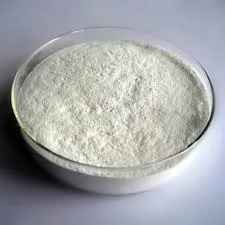
Nov . 16, 2024 21:36 Back to list
hec vs hpmc
HEC vs. HPMC A Comprehensive Comparison
In the field of pharmaceuticals and food technology, the choice of excipients can significantly impact the formulation and overall performance of products. Among these excipients, Hydroxyethyl Cellulose (HEC) and Hydroxypropyl Methylcellulose (HPMC) are two widely used polymers. Although they might seem similar at first glance, they have distinct properties and applications that set them apart. This article explores their characteristics, differences, and use cases, aiding formulators in making informed choices between HEC and HPMC.
Chemical Structure and Properties
HEC is a non-ionic, water-soluble polymer derived from cellulose. Its chemical structure consists of hydroxyethyl groups attached to the cellulose backbone, which enhances its solubility in cold water. HEC is typically used as a thickening agent, film-forming agent, and stabilizer in a variety of formulations.
In contrast, HPMC is produced by modifying cellulose with hydroxypropyl and methyl groups. This modification not only increases its solubility in both hot and cold water but also allows for the formation of gels at certain concentrations. HPMC offers a wider range of viscosity grades, which can be tailored to meet specific application requirements.
Solubility and Gel Formation
One of the prominent differences between HEC and HPMC is their solubility characteristics. HEC tends to dissolve better in cold water, making it ideal for applications where low-temperature processing is crucial. On the other hand, HPMC has a unique attribute of forming a gel upon heating, which is particularly useful in thermally reversible gel applications. This property makes HPMC suitable for a variety of pharmaceutical formulations, including controlled-release drug delivery systems.
Viscosity and Stabilization
hec vs hpmc

The viscosity profiles of HEC and HPMC also vary significantly. HEC primarily acts as a thickener, and its viscosity can be influenced by concentration, temperature, and the presence of electrolytes. This makes HEC suitable for formulations where maintaining viscosity at different conditions is essential, such as in suspensions and emulsions.
Conversely, HPMC’s viscosity can be finely tuned through its degree of substitution and molecular weight. This allows formulators to select specific HPMC grades to achieve target viscosities for diverse applications, including oral and topical drug formulations. The stabilizing effect of HPMC in emulsions provides better control over particle size and stability compared to HEC.
Applications in Pharmaceuticals and Food Industry
HEC is predominantly used in personal care products, cosmetics, and various food applications. It functions as a stabilizer in sauces and dressings, providing a smooth texture. In pharmaceuticals, HEC is utilized in topical formulations, where its thickening properties enhance the texture and adherence of creams and gels.
HPMC, however, finds broader applications in both the pharmaceutical and food industries. It is extensively used in the development of extended-release tablet formulations due to its controllable gel-forming properties. Additionally, HPMC is employed as a coating agent for tablets to mask unpleasant tastes and facilitate swallowability. In the culinary world, HPMC serves as a fat replacer and is popular in molecular gastronomy for creating unique food textures.
Conclusion
In summary, while HEC and HPMC share some commonalities as cellulose derivatives, their distinct chemical structures and functional attributes lead to varied applications in the pharmaceutical and food industries. HEC shines in cold-water applications and provides effective thickening and stabilizing properties, while HPMC offers versatility through heat-induced gel formation and a robust ability to tailor viscosity. When choosing between HEC and HPMC, formulators should carefully consider the specific requirements of their applications, including solubility, viscosity, and desired formulation stability. Ultimately, both HEC and HPMC are valuable tools in the formulation toolbox, each with its unique strengths catering to different needs in product development.
-
Versatile Hpmc Uses in Different Industries
NewsJun.19,2025
-
Redispersible Powder's Role in Enhancing Durability of Construction Products
NewsJun.19,2025
-
Hydroxyethyl Cellulose Applications Driving Green Industrial Processes
NewsJun.19,2025
-
Exploring Different Redispersible Polymer Powder
NewsJun.19,2025
-
Choosing the Right Mortar Bonding Agent
NewsJun.19,2025
-
Applications and Significance of China Hpmc in Modern Industries
NewsJun.19,2025







